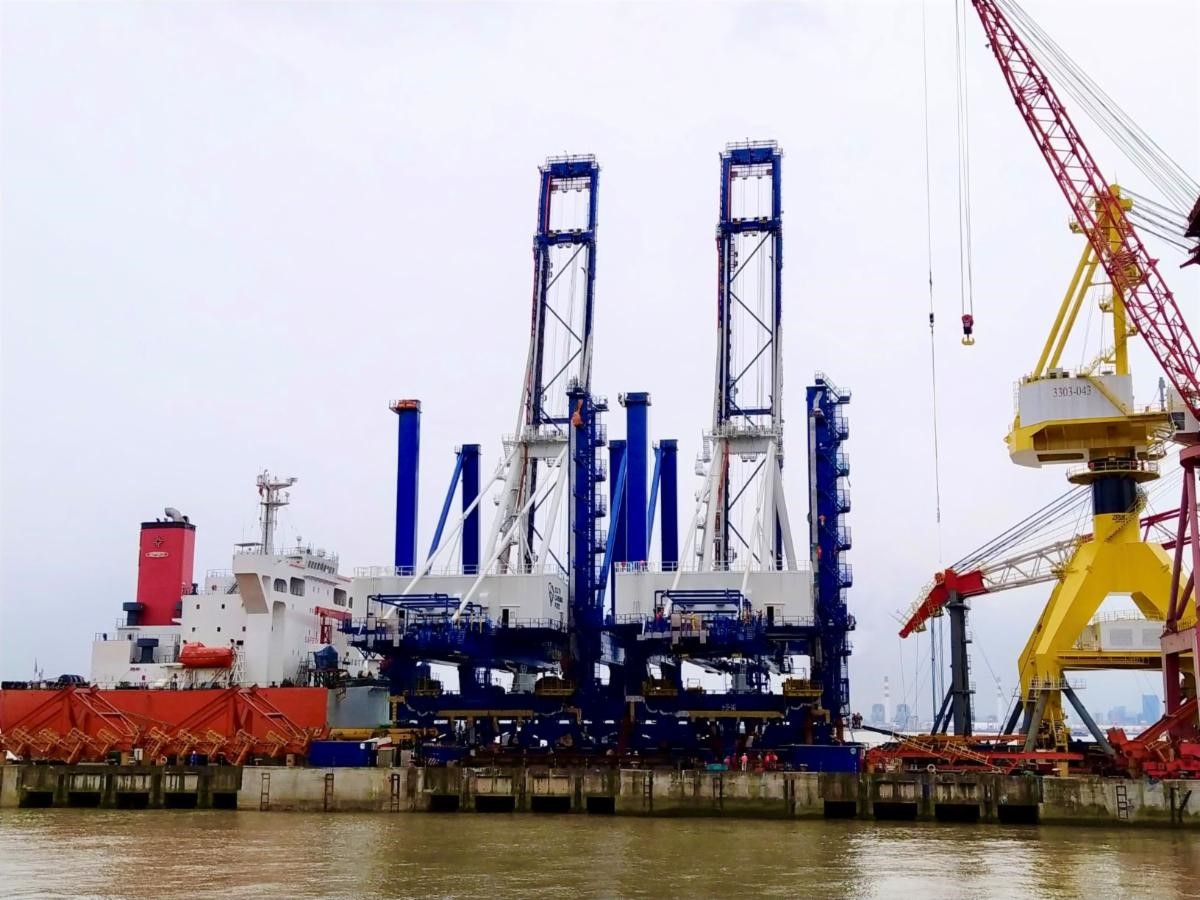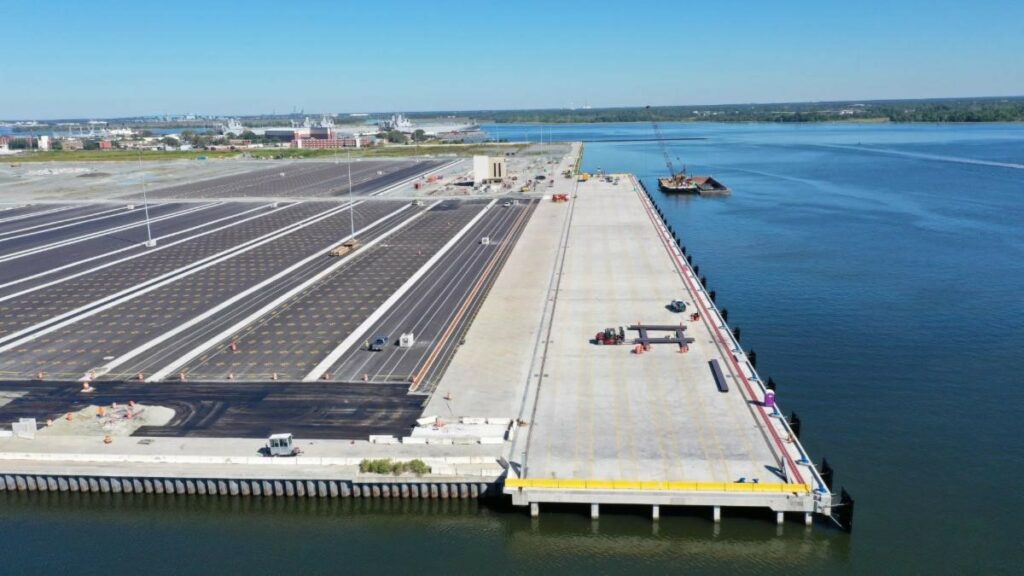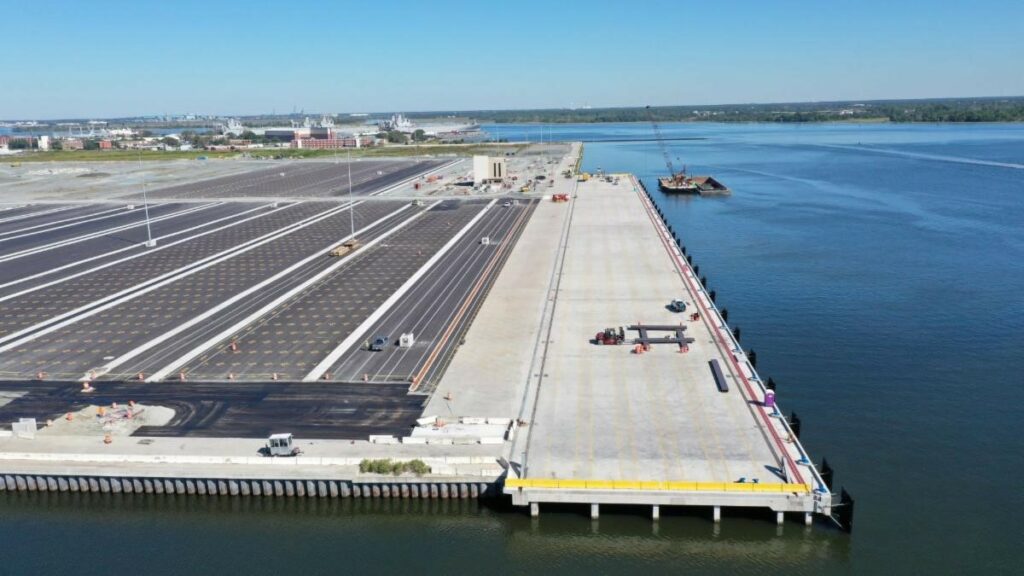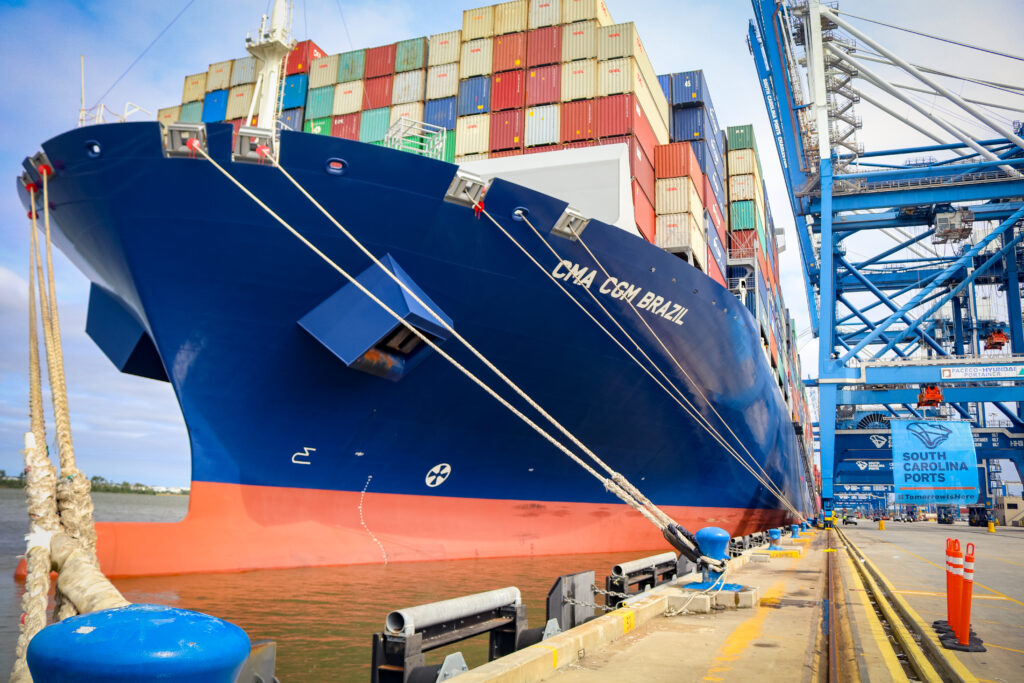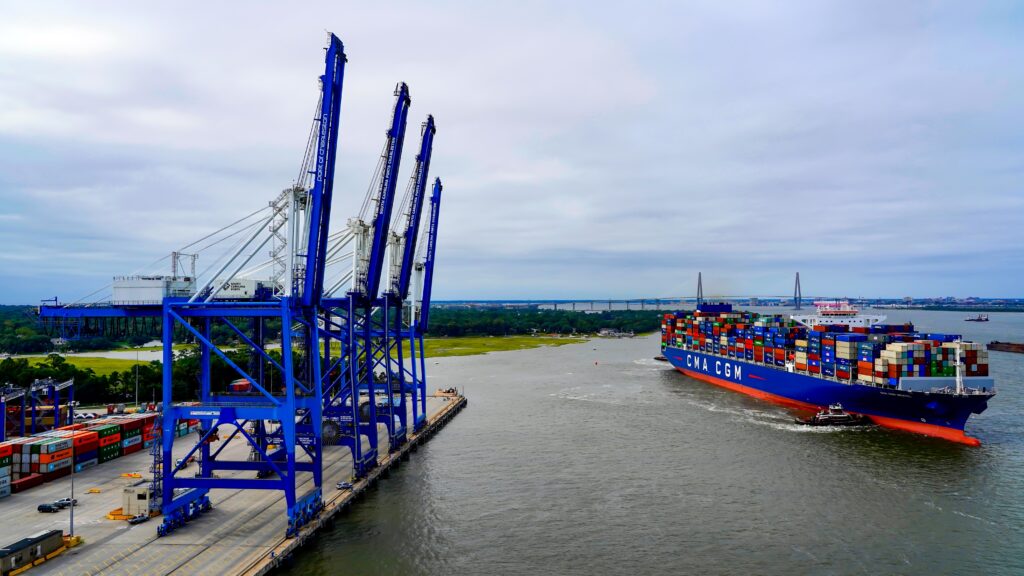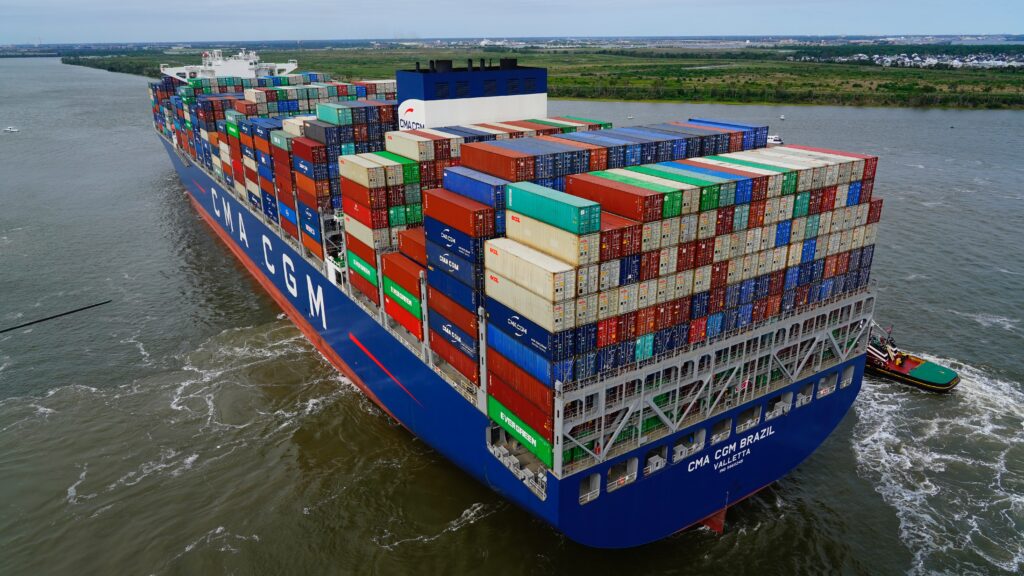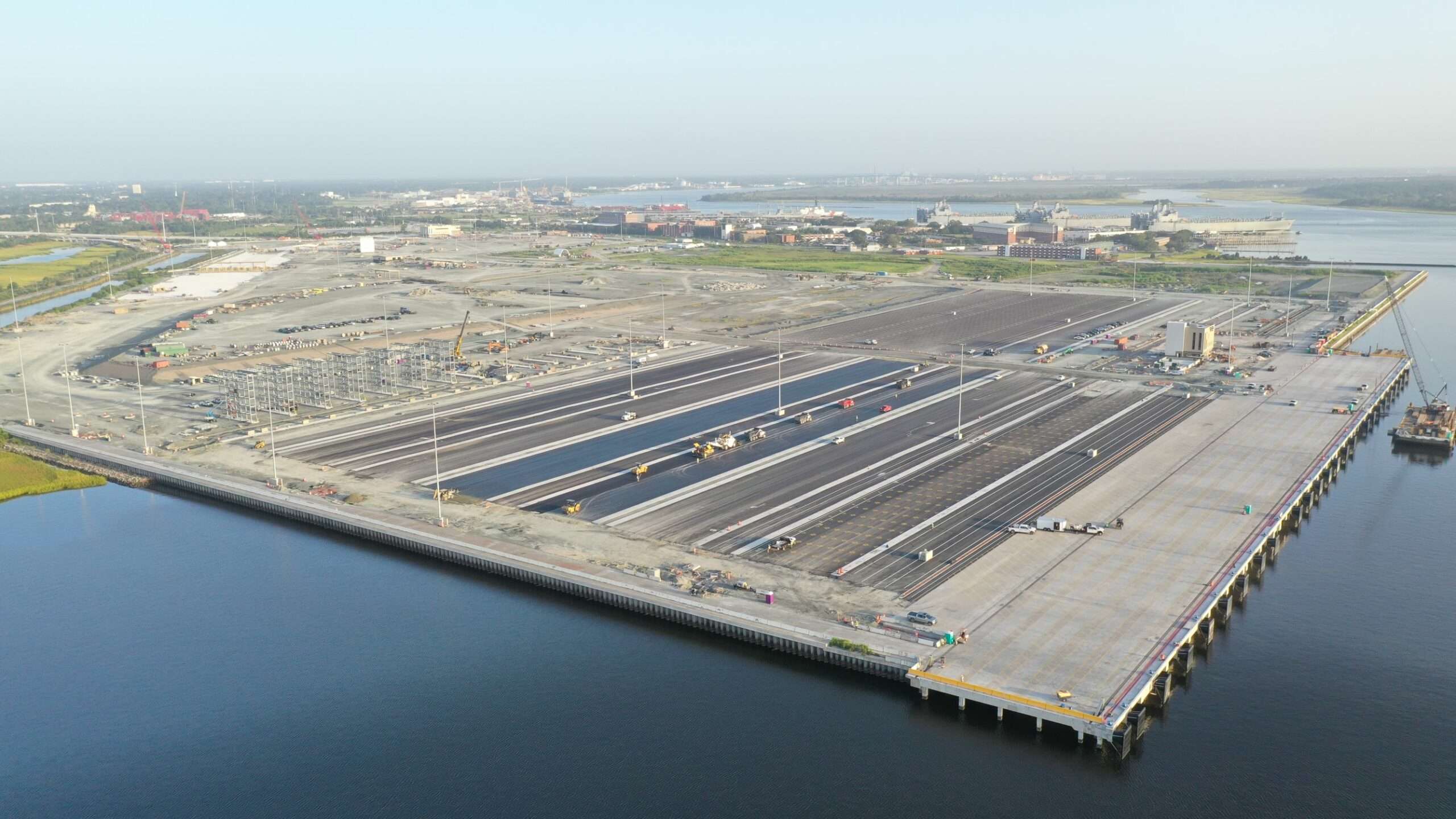CHARLESTON, SC – OCT. 26, 2020 – SC Ports received two new ship-to-shore cranes today, marking the first cargo-handling equipment to arrive for the Hugh K. Leatherman Terminal, which is under construction in North Charleston, S.C.
When the terminal opens in March, it will be outfitted with some of the tallest cranes on the East Coast. The cranes will have 169 feet of lift height above the wharf deck and an outreach of 228 feet, enabling them to work the biggest container ships calling on the East Coast.
The cranes, fabricated by Shanghai-based ZPMC, arrived at Columbus Street Terminal on the Zhen Hua 36 this afternoon. They are the first two of five ship-to-shore cranes to arrive for the Leatherman Terminal.
The cranes, which were disassembled for the journey, will remain at Columbus Street Terminal for about two days to be reconfigured to fit under the Arthur Ravenel Jr. Bridge.
They will then make their way up the Cooper River to the Leatherman Terminal. Upon arrival, the ZPMC USA team will erect, commission and test the cranes over several months before they become operational.
The cranes will then stand on the new 1,400-foot wharf, ready to load and unload cargo boxes from container ships when Phase One operations launch in March.
“It is with great pride and excitement that SC Ports welcomes the first two ship-to-shore cranes for the Leatherman Terminal,” SC Ports President and CEO Jim Newsome said. “The Leatherman Terminal is designed to handle 19,000-TEU vessels, giving SC Ports great capacity and big-ship capabilities to serve our customers. We look forward to welcoming the first ship at the Leatherman Terminal in March.”
The Zhen Hua 24 is carrying the second shipment of three ship-to-shore cranes, as well as four hybrid rubber-tired gantry cranes. This shipment is scheduled to arrive Tuesday, Nov. 3.
“The arrival of our new ship-to-shore cranes for the Leatherman Terminal is an incredible moment for SC Ports,” SC Ports COO Barbara Melvin said. “These cranes will soon be working the largest container ships on the East Coast at our state-of-the-art container terminal. Our SC Ports engineering team, our great partnership with ZPMC, and the unmatched collaboration with our project partners have made this possible.”
Phase One of the Leatherman Terminal will have a 1,400-foot wharf, five ship-to-shore cranes with 169 feet of lift height above the wharf deck, and 25 hybrid rubber-tired gantry cranes.
Phase One will add 700,000 TEUs of annual throughput capacity to the Port of Charleston. At full build-out, the three-berth terminal will double S.C. Ports’ current capacity by adding 2.4 million TEUs of throughput capacity.
The $1 billion Phase One of the Leatherman Terminal complements efforts to modernize Wando Welch Terminal and deepen Charleston Harbor to 52 feet. These investments will enable SC Ports to handle four 14,000-TEU vessels simultaneously in 2021.
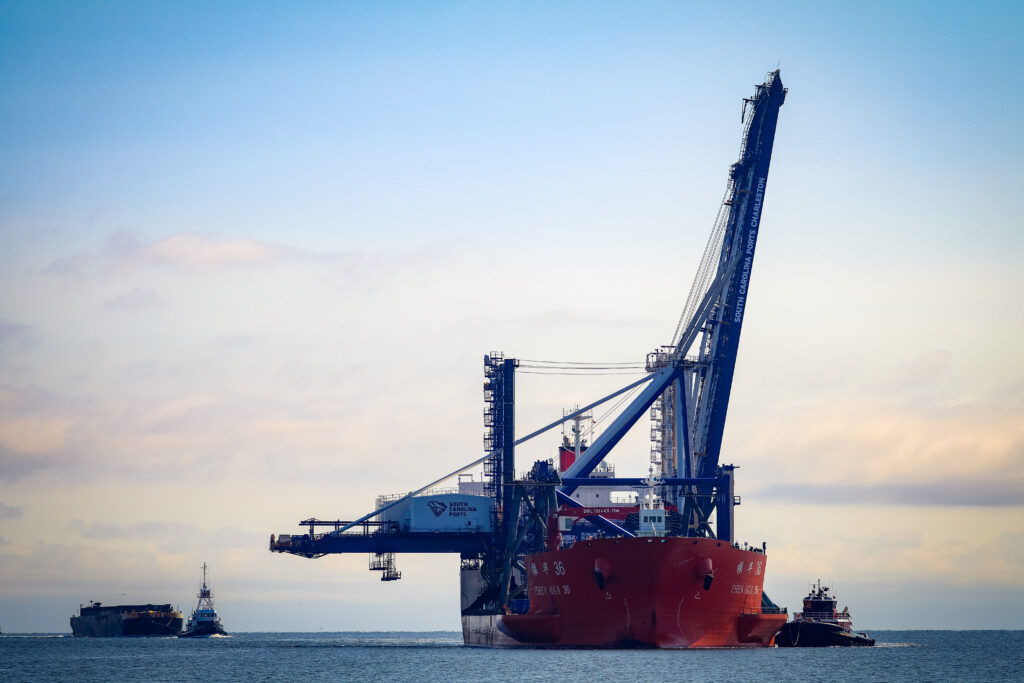
About South Carolina Ports Authority
South Carolina Ports Authority (SCPA), established by the state's General Assembly in 1942, owns and operates public seaport and intermodal facilities in Charleston, Dillon, Georgetown and Greer. As an economic development engine for the state, Port operations facilitate 225,000 statewide jobs and generate nearly $63.4 billion in annual economic activity. SCPA is soon to be home to the deepest harbor on the U.S. East Coast at 52 feet, and the Port is an industry leader in delivering speed-to-market, seamless processes and flexibility to ensure reliable operations, big ship handling, efficient market reach and environmental responsibility. For more information on SCPA, please visit www.scspa.com.
